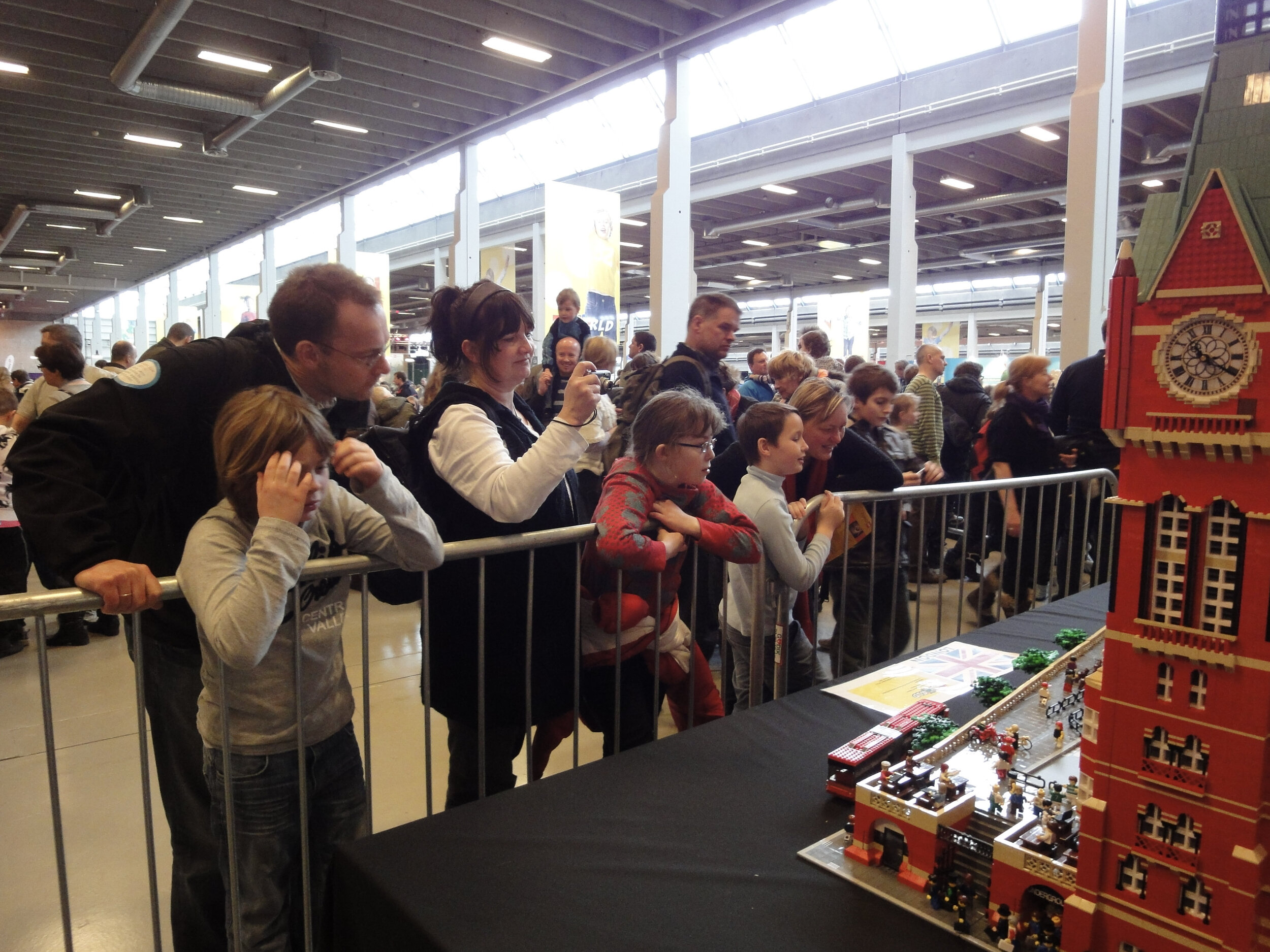St Pancras Station
Back to where it all began. St Pancras Station is a special model for me - for quite a few reasons!
I started work on St Pancras somewhere around 2010 - at the time I had a normal ‘day job’. I’d always wanted to build some more life-like LEGO trains (with 8 or 10 carriages, instead of 1!) so had already created a model of the HST 225 trains that took me to London for work. After that, I’d worked on a model of the Forth Road Bridge to drive them over, that ended up at 6 meters long! After these two though, I decided that I needed a station to run the trains into.
Kings Cross station is the actual station that my trains would have terminated at, but for a couple of reasons - I decided to go with St Pancras. Firstly, of course, there was the design. It’s a beautiful gothic design which works fantastically in LEGO bricks. Secondly, I had a plan B for the model. At the time I was trying to convince LEGO to sponsor a project for the 2012 London Olympics (not the one that I ended up delivering). St Pancras station was the station where trains to the Olympic park would depart from, so it seemed like an ideal match!
At the time St Pancras was built, I hadn’t embarked on a career building these models, it was simply as a hobby. That probably explains why this MOC* took almost 2 years to complete. In fact, once I’d completed the hotel building - I swore that I would not build the train shed either. That promise didn’t last long…
*MOC = My Own Creation. A terms that AFOLS (adult fans of LEGO) use to describe a model that we designed, as opposed to one that came with instructions. Yes, we are all quite keen on acronyms!
Building this model as a hobby also means that it has some significant differences from one of our usual touring models. For started, until a revamp in 2021 - it wasn’t glued at all. Even now, around 90% of the model is not glued and it relies on the properties of LEGO bricks alone to keep it together. Just as importantly, it was originally designed to be moved in a car. That meant no larger flightcases and the model would need to break up into many - MANY - pieces. Perhaps the ultimate flat pack model!
St Pancras also had to be built at home, in the spare room - or the lounge floor (which turned out to be the only place large enough to test build the train shed! Once the build was finally complete, though, as a MOC I could take it to a number of LEGO events. It was displayed in the UK, but also the Netherlands and Denmark (on multiple occasions). On its first ever public outing I was lucky enough to be able to show it to Kjeld Kirk Kristiansen, then owner of The LEGO Group and grandson of the companies founder.
St Pancras Station was so special for another reason - it’s the model that caught the eye of my first books’ publisher. He had seen the model and thought a book of 20 such models would be a great idea. of course - having spent 2 years creating this model, I was pretty sure that the publisher wouldn’t wait for another 40 years! We came up with a plan though and Brick City was born. Brick City (the book) became Brick City (the tour) and the rest is history.
I have always wondered about doing Kings Cross as well though……..












